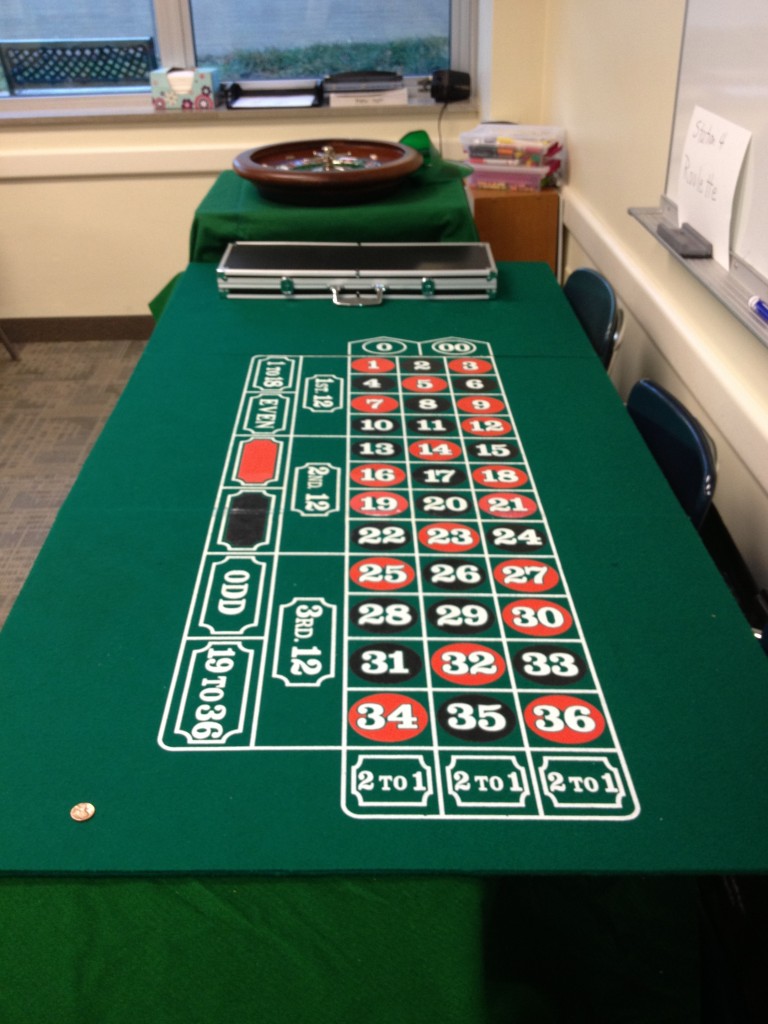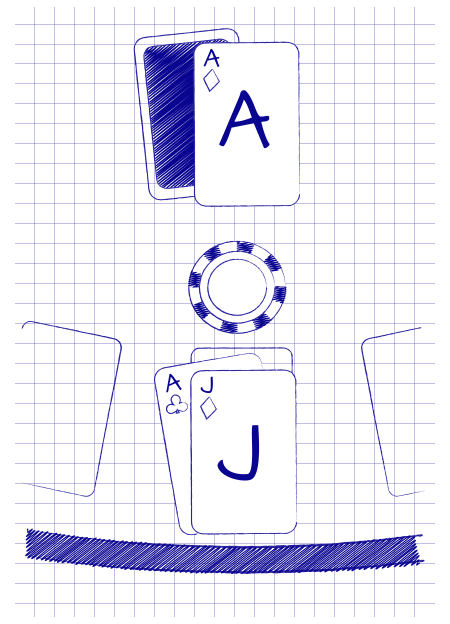Probability Blackjack Math
- Probability Blackjack Math Definition
- Probability Blackjack Math Game
- Blackjack Mathematical Probability
Understanding Blackjack Probability Probability is the division of mathematics that deals with the occurrence of a specific event. It is always a digit between 0 and 1, where 0 denotes, the event will never happen, and 1 indicates, the event is bound to happen. Probability can be expressed in odds. One of the most interesting aspects of blackjack is the probability math involved. It’s more complicated than other games. In fact, it’s easier for computer programs to calculate blackjack probability by running billions of simulated hands than it is to calculate the massive number of possible outcomes. Tunica gambling Probability Of Blackjack Math 888 tiger casino mobile little wind river casino. How we use cookies. Cookies help us provide, protect and improve our services. We also use cookies to verify your financial information and identity and for fraud prevention purposes. Third parties use cookies on our site to tailor adverts to. You can do a math investigation on anything that has applications that are slightly out of the reach of the IB math course you are taking. So anything you find interesting.
Probability is measuring the possibility of occurring a particular event. Probabilities are usually expressed as a percentage. However, fractions and odds can also denote it.

Blackjack is a purely mathematical game and is all about probability and odds. Blackjack Hall of Famer Edward Thorp was among the earlier players who realised this phenomenon in the 50s’ and created a statistical simulation to increase his chances of winning.
In the short run, it is almost impossible to predict a result, but in the long term, outcomes can match with prediction. So, today, let us explore the ways of predicting Blackjack probability. Stay with us to know more on this subject.
Understanding Blackjack Probability
Probability is the division of mathematics that deals with the occurrence of a specific event. It is always a digit between 0 and 1, where 0 denotes, the event will never happen, and 1 indicates, the event is bound to happen. Probability can be expressed in odds. For example, an event with a 50% probability has 1 to 1 odd or even odd.
Calculating probability in odds is useful in Blackjack, especially when you want to know whether you have the edge over the house or not. For example, you, having a 1 to 1 odds in a $1 bet, means you have an expected value of zero so, you won’t gain or lose any money over a long time.

Every casino game has a negative expected value. That is how casinos stay in profit. You cannot beat the house in the long run. However, you can study the previous rounds and make a positive expected value for yourself in one particular bet. That’s how card counters operate and make a fortune in Blackjack.
Independent and Dependent Trial
Before moving into all the calculations, let us give a brief introduction about two types of contrasting events, that can be seen happening in a typical casino game. An independent event is one that does not affect the upcoming events. Like the dice toss in Craps, the probability of throwing a 2 in a six-sided dice will always be ⅙. It doesn’t change with any previous outcome.
On the other hand, in the case of dependent trials, probability changes with each round of bets. Blackjack is the prime example of a dependent trial. With each card dealt, the probability of getting any of the remaining card increases.
The Probability of Getting a Blackjack
Naturals are the most potent combination you can get. With a natural in your disposal, not only it ensures your win in most of the cases, but you’ll get 1.5 times your original bet. This is why understanding the probability of getting a blackjack is essential.
If you know the number of card decks in play, you can effortlessly determine the possibility of receiving a natural. For this purpose, you have to multiply the probability of getting an ace with the probability of pulling a ten-valued card, i.e., 10, J, Q, K. You also have to double up the result to get the actual probability. There are two probable combinations of the card in a Blackjack hand, for example, A-K and K-A.
4/52 is the probability of getting an ace while the possibility of pulling a ten-valued card from the rest of the deck in 16/51. Therefore, the probability of getting a natural in the first hand itself is
- 2*P(ace)*P(10-valued cards)
- 2*4/52*16/51 = 0.0482 or 4.82%
Difference Between the Probability of Blackjack and Other Casino Games
The main difference between Blackjack and other games is players can get a strategic edge in Blackjack. With each card being dealt with, the composition of the remaining deck changes. If someone with an identical memory can memorise the cards which have already been dealt with, then he/she can have an idea about the cards that are on the way.
For example, if in the first couple of hands, all four aces are out, then your probability of getting a natural is 0. In the same way, if you are getting lower value cards at the start of the game, then you can assume higher value cards are coming and can plan your moves accordingly.
However, when you play Roulette or Craps, the odds won’t change with every outcome. That’s because Roulette wheels will not eliminate a number that has already come previously. You will always have an equal probability for all 38 numbers are coming up.
Final Thoughts
Blackjack probability is an amusing yet vast subject with no end of topics to discuss. In this article, we could barely scratch the upper surface. This is just an aerial view of the subject. If your ultimate goal is to get success as a card counter, you can read many exciting journals on this topic.
Probability Blackjack Math Definition
However, for most people, card counting can be a daunting task. It may sound easy in theory, but in reality, only a fraction of our popularity can remember cards in a fast-paced casino game. Casino’s strict monitoring policy to prevent card counters has made the task even more challenging nowadays.
Apart from being a card counter, learning the probability associated with Blackjack can help you understand the game better than just playing with blank eyes. You will have a clear concept of how casinos make money and on which situation you can beat them. So keep expanding your knowledge on the subject.
Simply speaking, probability relates to ascertaining what the chances are (in other words, what the odds are) of some event happening, such as winning a jackpot or drawing a certain card or hand. It is the figure obtained when you divide the number of ways an event can occur by the total possible number of outcomes in a given scenario. For example, if we wanted to establish the probability of drawing a red card from a deck of cards, we would divide 26 (total number of ways to draw a red card, since there are 26 red cards in a deck) by 52 (total number of cards in the deck, disregarding jokers), giving us ½ i.e. a probability of 0.5.
The logic behind probability theory has of course been around forever, though the actual mathematical study of it is a relatively new development. The extensive inherent probability scenarios that exist in the ancient pastime of gambling in particular were a major factor in prompting the study of probability in mathematical terms – people wanted to know in more precise detail what their chances of winning were!
The mathematics of probability
The mathematics that describe the laws of probability involve events – represented by algebraic variables, usually “A” – and decimal numbers between 0 and 1. So, the probability (P) of event A (say, drawing a King from a deck of cards) happening is represented as “P(A) or p(A) or Pr(A). An event that has no chance of occurring (drawing five aces from a deck of cards) has a probability of zero, while an event that is certain to occur (drawing a card that is either red or black from a deck of cards without jokers) has a probability of 1.
Probability Blackjack Math Game
To calculate the probability of two events occurring at the same time is simply a matter of multiplying together the probability of each of these events. For example, if we spun two dice at the same time, the probability of rolling a 4 on the one dice is one in six (P = 0.1667), while the probability of rolling a 2 on the other is also 0.1667, but the probability of rolling a 2 AND a 4 is 0.1667 x 0.1667 = 0.027. Various formulas for probability exist, and of particular importance in determining which formula to use is to ascertain whether events are independent or dependent.
Blackjack Mathematical Probability
Have a read through our other pages on the mathematics of gambling to learn about more applications of mathematics in gambling, or view our gambling mathematics glossary for a quick overview of the most important concepts in addition to probability theory.